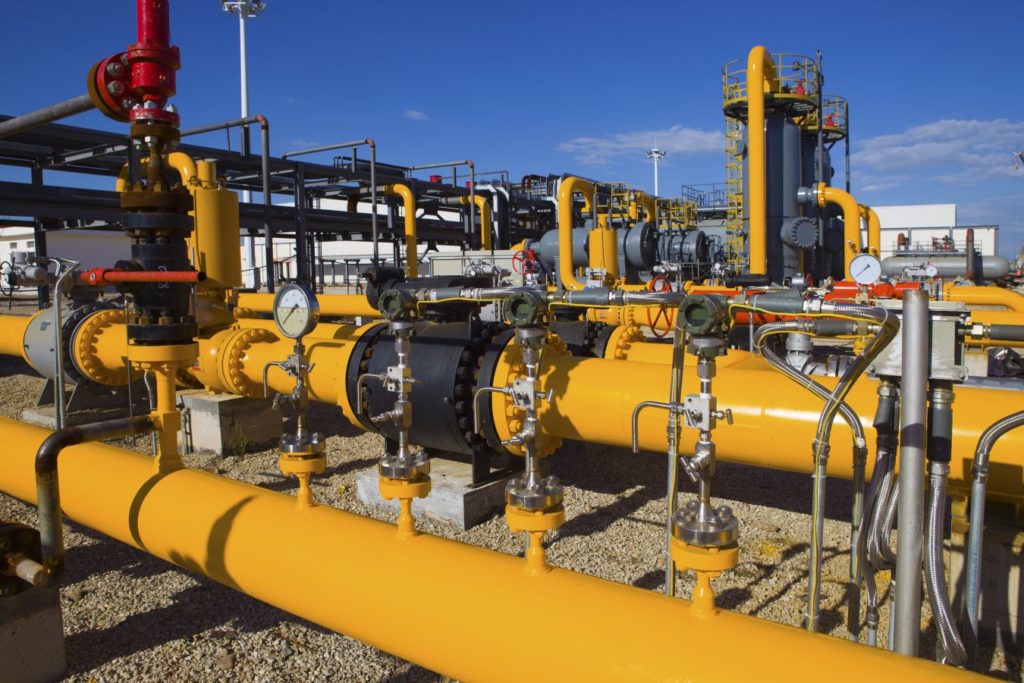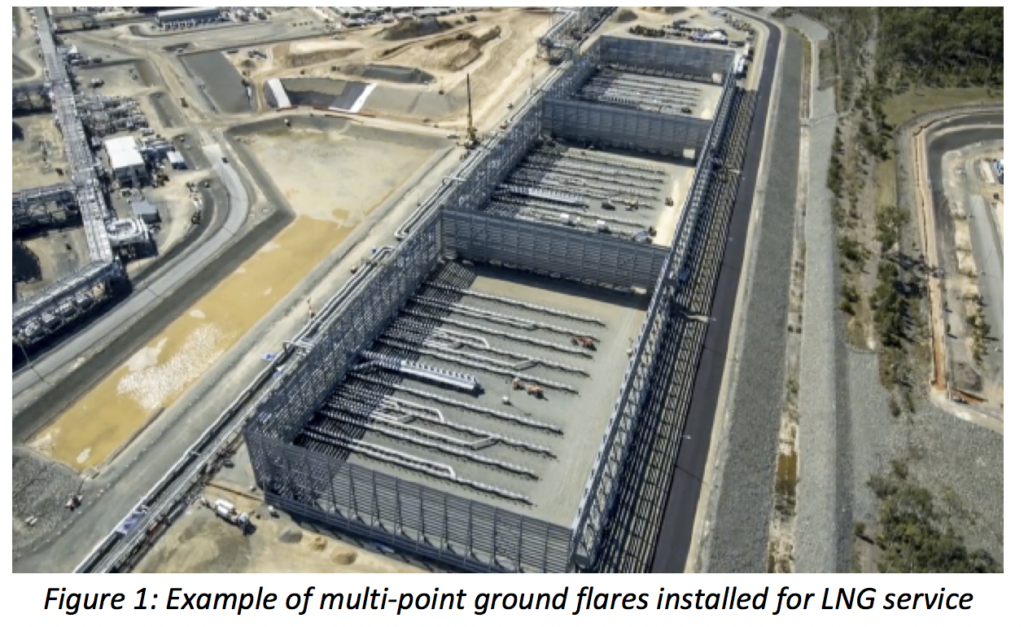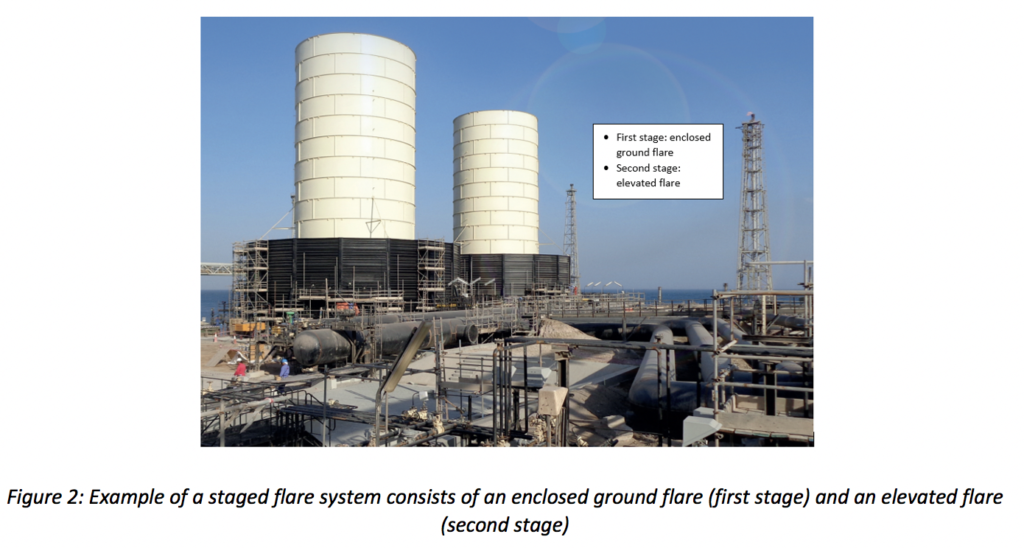
A staged flare design utilizes a smaller capacity flare to handle flaring requirement during normal operation, maintenance, and start-up cases; and a larger capacity flare to handle emergency flaring requirements.
Staged flare systems can include the following:


Images courtesy of Zeeco, Inc.® – all rights reserved.
Advantages
Low purge ratesThe flowrate of flare purge gas Learn more... – most stages are typically closed until required to open for an emergency relief scenario. A continuous purge flow is only required for the first stage; therefore, lowering emission from purging
Design variability – each stage can be designed to meet the process requirements
High turndown capacity – limit equipment downtime
Long equipment service life – equipment associated with second and successive stages operate less often; hence, increasing the life span of these items
Limitations
Sufficient plot space would be challenging, especially for existing facilities
Case study
Awaiting copyright approval
Maintaining effective cobustion efficiency and destruction efficiency are key to minimising methane from flaring. This can be achieved through improving the mixing of flare gas and air to enable complete combustion and/or by only lighting the flare when required using ignition and pilot-light systems that avoid the risk of venting.